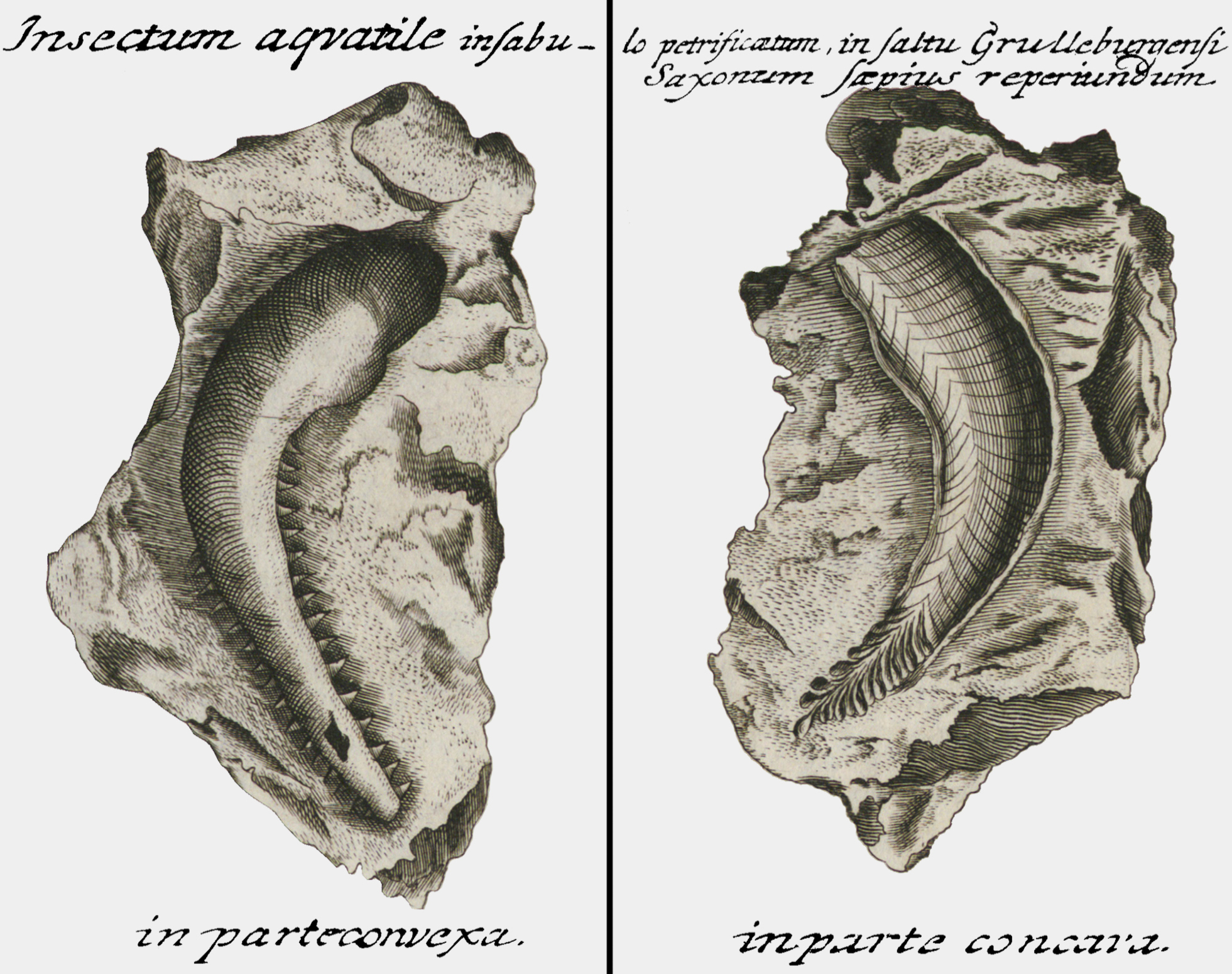
|
||
|
Zwei der bisher bekannten drei ältesten Abbildungen von Fossilien aus der sächsischen Kreide zeigen eine linke Klappe der Hahnenkamm-Muschel Rastellum carinatum aus dem Grillenburger Sandstein; Henckel (1722: S. 561 und 562) war der Meinung, dass es „eine Art eines insecti marini sei“. Der linke Steinkern (Henckel 1722: Fig. 2) wird als „teilweise konvex“ (in parte convexa) und der rechte Außenabdruck (Henckel 1722: Fig. 3) als „teilweise konkav“ (in parte concava) bezeichnet. Figure 6. Two of the three oldest images of fossils known from the Saxonian Cretaceous show a left shell of the bivalve Rastellum carinatum from the Grillenburg Sandstone; Henckel (1722: p. 561 and 562) was of the opinion that it is “a kind of insecti marini”. The inner imprint at the left side (Henckel 1722: fig. 2) is called “partly convex” (in parte convexa) and the outer imprint at the right side (Henckel 1722: fig. 3) is called “partly concave” (in parte concava). |